|
|
|
Accompanied by a brief commentary, this step by step demonstration shows the progress of a miniature painting from start to finish. To enable you to see some of the different approaches I take to develop these little gems, there are several other demos posted in this Available Miniature Paintings and in the Commissioned Miniature Paintings sections. Look for the "click HERE" feature at the top of a page. Because each miniature has its own characteristics, I approach every one differently. There are times I begin with the background, while with others the main subject may be my starting point. My medium is acrylic paint, and my brushes range from #2 down to #0000. Most miniaturists use some sort of magnifier as a way to see and work on minute detail. Reading glasses and a simple hand held magnifying glass work best for me. The steps: |
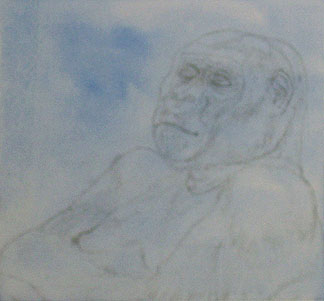 |
1.
(For miniatures I often work on Strathmore Illustration Board, 500 series, a totally archival product.) |
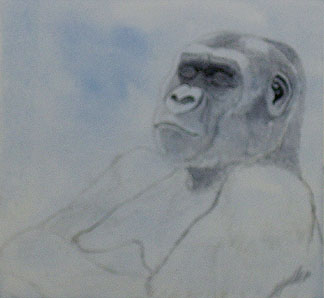 |
2. After the blue wash was applied I noticed that some of my pencil work had become imperceptible. In order to save the drawing, I carefully brought these vanishing pencil lines back with thinned paynes gray paint. At the same time I developed some facial values (halftones) with washes of this same color. |
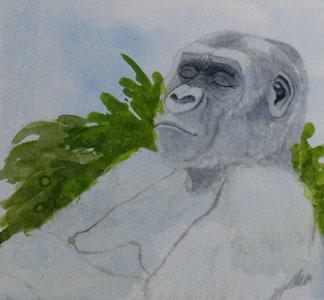 |
3. I applied clear masking fluid over the gorilla before beginning the suggestion of background foliage. This protective mask allowed me to freely paint in the greenery and continue with the rest of the background without concern for the gorilla. |
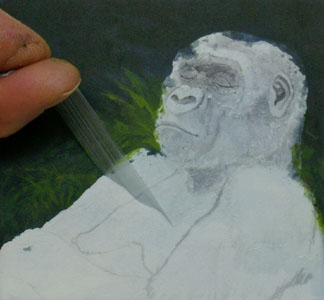 |
4. Once satisfied with the background, I peeled off the protective rubber mask with my fingers. A rubber cement pickup was also used to eliminate any sticky remnants. |
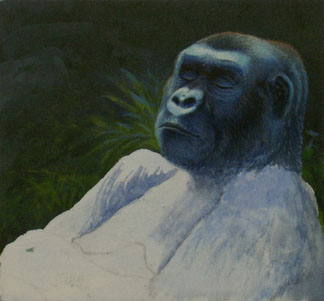 |
5. With background completed and the mask removed, I now felt comfortable to begin my rather dark subject. Here again, my paint was applied in layers to build color and to better control my values. |
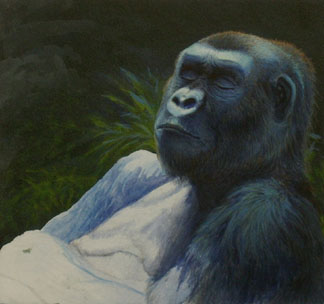 |
6. As I developed the gorilla's body, I continuously went back to the head, neck and shoulder to make adjustments. |
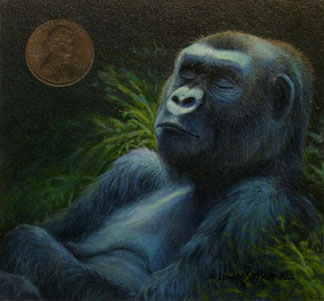 |
7. The penny on the artwork is only for scale. |

Contemplation by Moonlight -- (Enlarged)
Gorilla, Female
Acrylic Traditional Miniature
Size: 3" x 3 1/4"